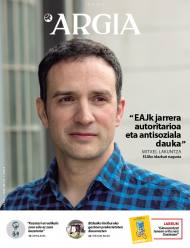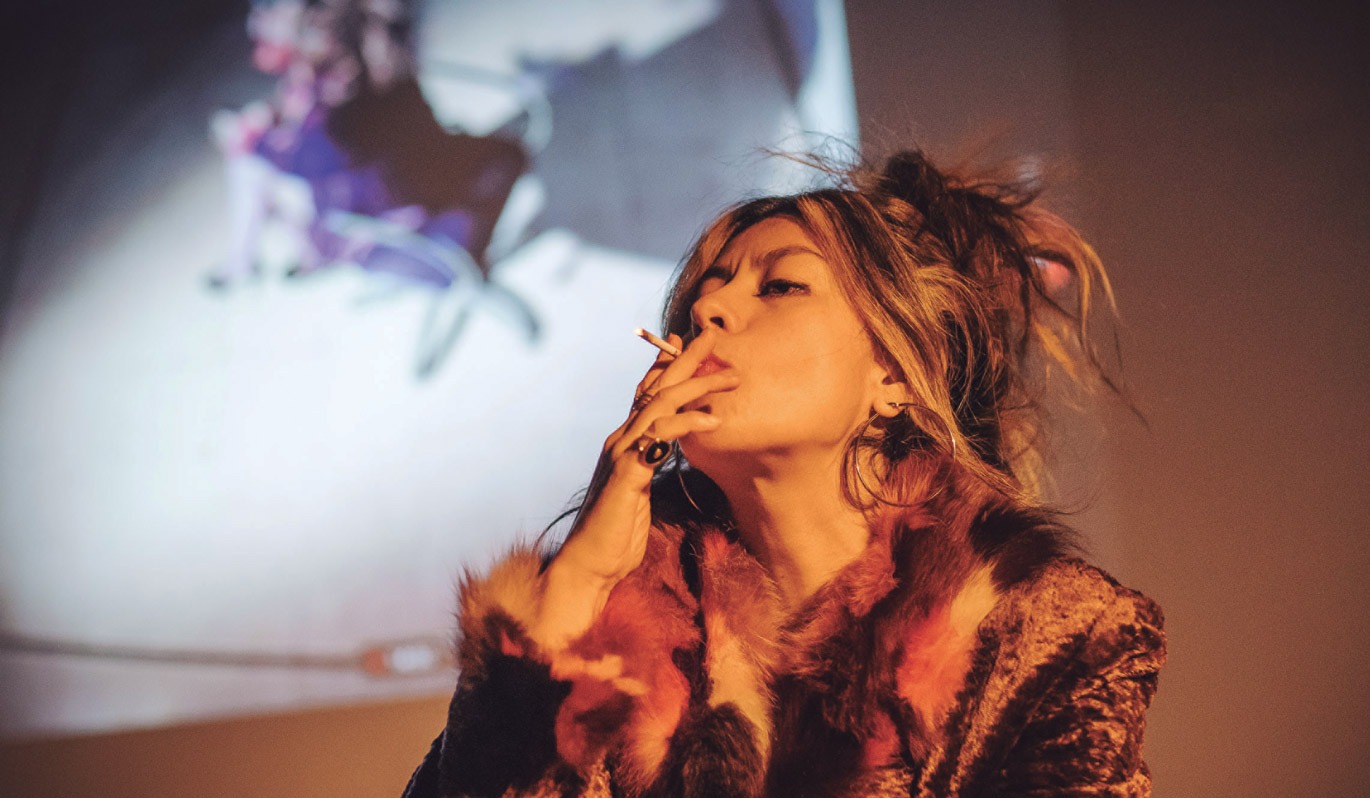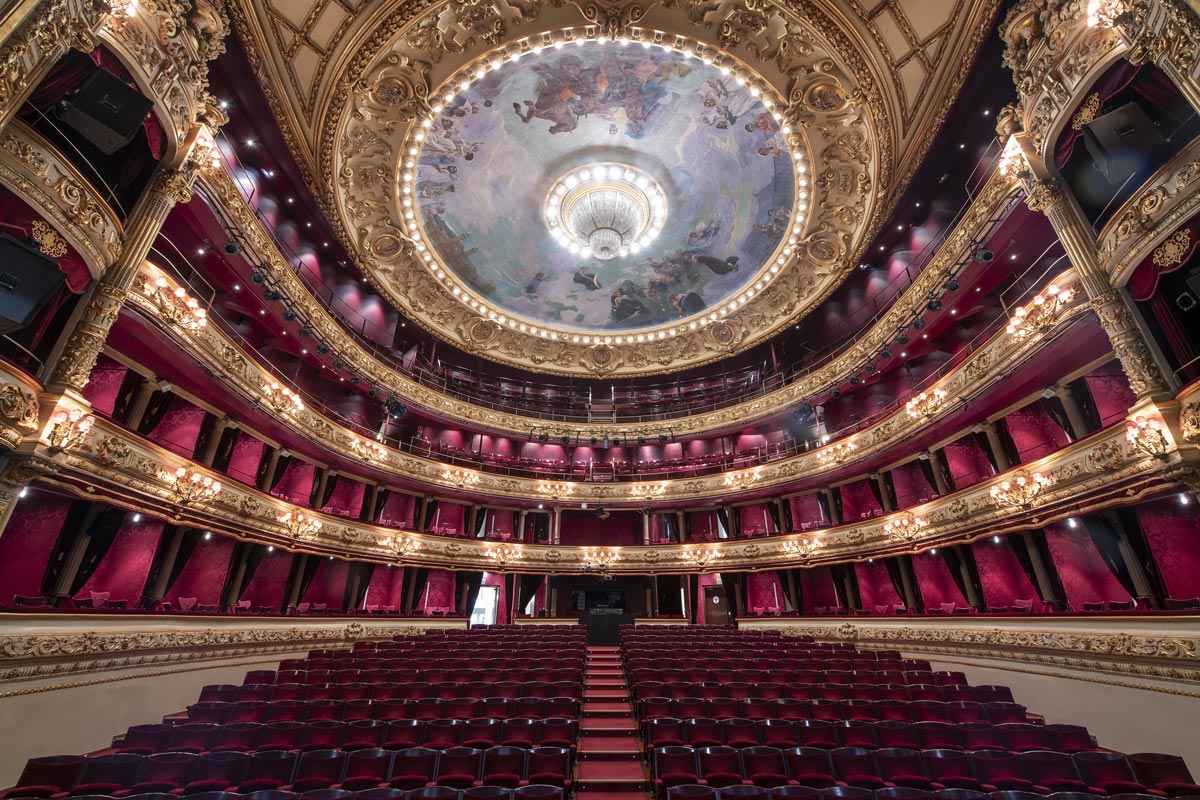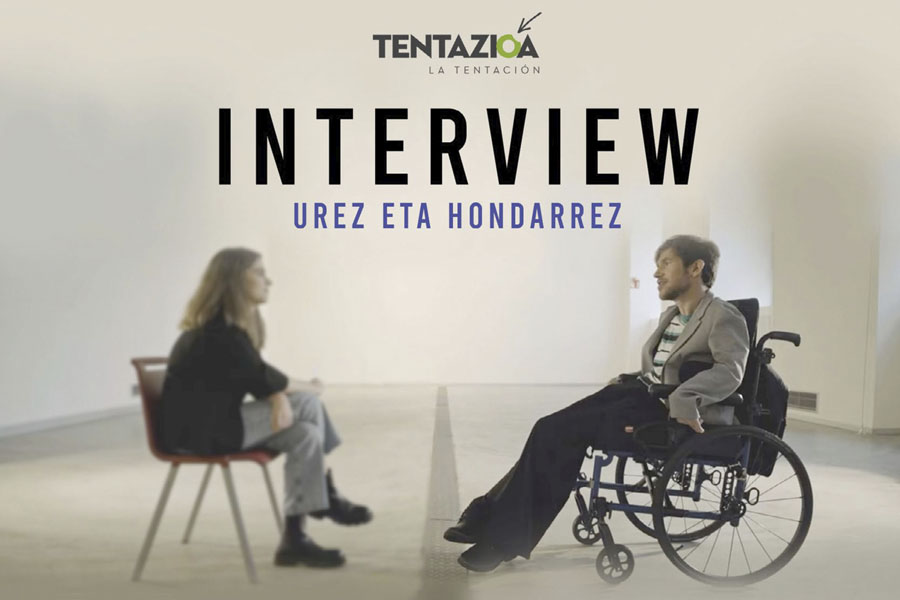Free-body dramaturgies to open the canon
- In the same year, the playwright Amancay Gaztañaga and Iraia Elias were born, living just 15 kilometres away. However, only a year ago they met. But not in any case: they were found for the first time in a play and have since done two other plays together. The chemistry between the two is obvious.
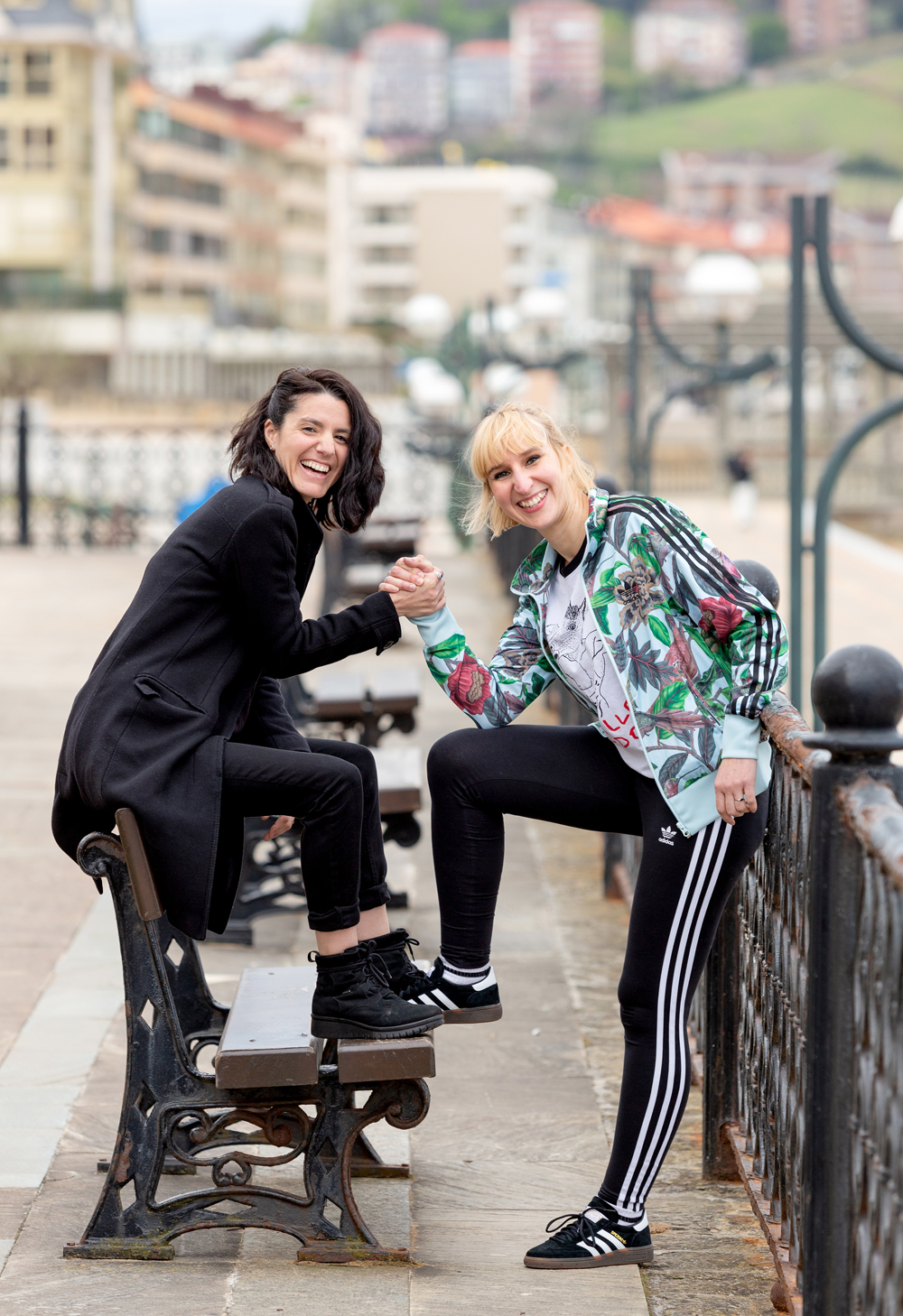
We are staying in the cafeteria at the end of the Zarautz Malecon and, although I have arrived in time, by then Amancay Gaztañaga and Iraia Elias are waiting for me, on the txoko table, freshly breakfast. In laughter, I've been told that they met recently, and it's strange how little they've done together in such a short time.
First on order: On the occasion of the 20th anniversary of the Kalerki festival, the organizers wanted to make a version of the play The Adventures of Alice in Wonderland, with the actors of Zarautz – including Elias. They asked Gaztañaga to run the work and thus began his friendship. After A Lurpean came Agur and Dolore and Käffka. The processes have been different, but in part they have worked on the three, the same: Director Gaztañaga and actor Elias.
Away from canon, free
Elijah has put the first item on the table: “When we did it underground, for me it was the first time I worked with a women’s director. We [at the Ttak Theatre and at the Metrokoadroka Creation Laboratory] have worked a lot without a director, with an outside gaze, but otherwise. When there is a direction and things are clear, that too is a marker. It was beautiful.” Gaztañaga looks at the shadow of the beautiful: “As a director, you always have such a burden and a loneliness that I don’t feel as an actor. In addition, it's different to be a female director. As a director, you know that what you say has no weight, that anyone can come, say anything and question it.”
Amancay Gaztañaga: "Culture is a powerful tool and perhaps this system is not in everyone's interests"
But why are women's directives being called into question? Gaztañaga replied: “It’s an interesting point. Why do I question that which I am very clear about? With the teams I have never felt the opposite: all the groups have always put a lot of trust in me, and I am grateful for that. But there is a struggle with oneself, because, of course, it challenges those norms that society has put on you, and, on the other hand, because in the words of others there is a certain unconscious contempt.”
In some places there are no women, that is what Elias said: “You take out the call for new dramaturgies and realize that there are no women. Why? What's behind that? I do not know what the key points are, I think there will be more than one factor, but then the reality is that in some places we are not. We're not. It seems that playwrights don’t exist.” One of the factors that, according to Gaztañaga, can have the system tailor-made for men is: “I feel it’s complicated, strange, that to reach some places I have to learn a language that I don’t feel comfortable with, and now I’m becoming aware of it.”

They've also felt the straws when they were on the stage. Elijah: “We have very internalized the question of being wanted and when you put yourself on a stage, you realize that people will see you and that they will think something: too thin, too fat, too little… There is a kind of judgment, I think more to us than to men. In this sense, in Agur eta Dolore we allowed ourselves not to appear nice, right, desirable, but to build from freedom: this comes out and ends. The same way your body takes.”
Gaztañaga brings up the canon of bodies: “Inside I have always felt ugly, so I am not inside or outside the canon, I feel very free, very free. What they sell us, the stereotyped image of women, within the canon, is impossible to get to that. It's crazy. It's not real." Elijah has agreed that the canons are “locks”.
A new audience
Among the works they have done together, I have only seen one, I have asked them about the process of creating Agur and Dolore, and they have answered me “magical”, “fluid” and “beautiful”, smiling. The way forward has been explained to me: Look at Gaztañaga and Elias joined the rhythm of Hall 6 in Bilbao. They had to talk about a particular topic, and they felt like: culture, scenery, women. Among them there was a huge chaparron of ideas, atmospheres and environments were sought, and then they went to Amancay Gaztañaga to offer them an outside look. They assaulted, and they started looking at things. Gaztañaga: “In an improvisation by Miren and Iraia I discovered that the idea of the ritual worked a lot, that that was the way. I sent them some work from the house and from there came what we can’t count here.”
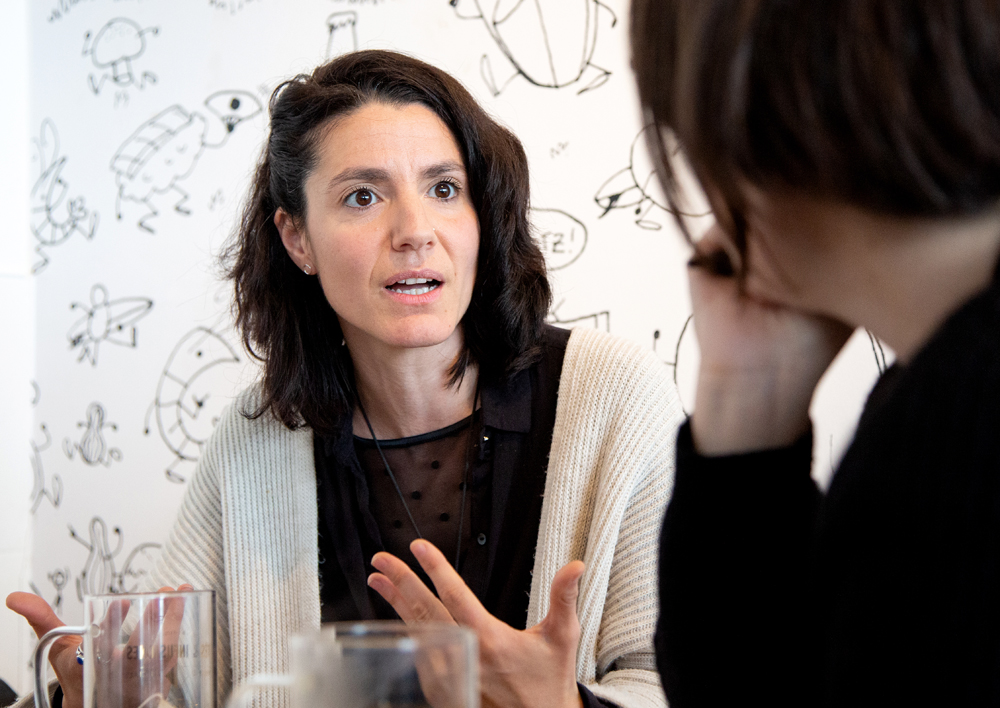
Therefore, they started from improvisations, clothing, materiality, and then they created the texts. It's common to them, but it's not the most common thing. Elijah: “In theatres, in official places, we are accustomed to seeing theater of all kinds, a theater that starts from text. Works such as ours are gradually gaining ground, although it still costs them, because fears are generated, but I think it is a way to go. In the end, things can be expressed in very different ways, and the more things are in sight, the better.”
Iraia Elias: "What political strategy do we have for culture?
We don't have.
And that also means a lot."
Gaztañaga compares with the visual arts: “If you’re used to seeing only realistic paintings in a museum, if you suddenly get a Rothko, four squares, you don’t understand it. But that’s how beautiful art has, and it has to be too.” Elijah brings public: “It is often said that the audience is always the same, that there is no variety, but, of course, if we always give it the same thing to eat… How to create a new audience? Well, with new and different products.”
Gaztañaga has given an example: “The other day in the performance of Käffka in Zumaia something very special happened to us, and we are also seeing it with the piece Agur eta Dolore: suddenly there is an audience, a lot of young girls between 19 and 23 years old, and we think: Where was this audience? The programmer himself was surprised. There we have a quarry, and if we don’t feed it, goodbye.” Elijah has come to the conclusion that it is the responsibility of all those who are responsible for keeping this quarry. That your subscription is due.
A political strategy for culture
I threw the thread and asked her to do an X-ray of the current scene. Elijah started with: “I believe that this profession needs a constant review and at this moment I would ask for a powerful review, from the honesty: how the actors are, how the directors are, how the networks are created, what health we have at the moment, what heritage we are leaving to the new generations, to the new workers… I think there are many things to change to review and do.”
Gaztañaga notes the general situation: “Culture is a powerful tool and perhaps this system is not interested in being in everyone’s hands, because today culture is a privilege, starting with schools, and it should not be. Teaching the flute to kids, that's not teaching music, and you have to go to study music to a music school, you have to pay a money apart, there are many families who don't have it, and for theater the same thing. But mathematics is essential, so we know that two plus two is four. Why do some things have to be or do and others are privileges?”
Elijah has rounded his thoughts: “After all, culture must be part of a strategy. It seems that it is something loose: these do theater, those sing verses… But no, culture is life, and through culture many things are transmitted. What political strategy do we have for culture? We don't have. And that also means a lot.”
Zarautz, 1980. Metrokoadroka sormen laborategiko kidea eta Ttak teatroaren sortzailea. Kolektibo horiekin egin ditu hainbat lan. Hortik kanpo ere, hainbat proiektutan aritu da aktore gisa oholtza gainean, besteak beste, aurtengo Donostia Antzerki Saria jaso duen Sherezade eta tipularen azalak lanean. Zinean ere aritu da: Amama eta Oreina filmetan, adibidez. Hain justu ere, 2016an Espainiako Goya sarietarako hautagai izan zen, Amaman egindako lanarengatik.
Guayaquil, Ekuador, 1980. Antzerki-ikasketak egin ditu eta horretan ibili da luzaroan, Euskal Herrian eta handik kanpo. Kamikaz kolektiboko kidea da, Miren Gaztañaga eta Erika Olaizola antzerkilariekin batera. Zestoan hazi zen eta bertan bizi da. Hainbat obra zuzendu ditu herriko antzerki taldearekin, Eromen Produkzioak. 2016an, adibidez, Sweeney obra taularatu zuten, eta Euskal Antzerki Topaketetako saria jaso. Grises musika-taldeko abeslaria da.
The whore’s monologue in the madhouse
- The author(s): Franca Rame and Dario Fo.
- From the translator: Assisted by Xabi Martinez De Lezea.
- The actor is: Assisted by Laura Penagos.
- When: April 12th.
- In which: At the Atxulondo Cultural Center in... [+]
Iruñea ez da oso handia, baina Beñat Iturbek elkarrizketarako lekua hautatu duen arte ez dut jakin institutu berean ikasi genuela. Madril eta Iruñea artean bizi da, han hemen baino gehiago, oraingoz. Etxera egin duen bisita bat probestu dut harekin... [+]
I'm talking about Interview. With water and sand
Authors: Telmo Irureta and Mireia Gabilondo.
The actors: Telmo Irureta and Dorleta Urretabizkaia.
Directed by: Assisted by Mireia Gabilondo.
The company is: The temptation.
When: April 2nd.
In which: At the Victoria Eugenia... [+]









